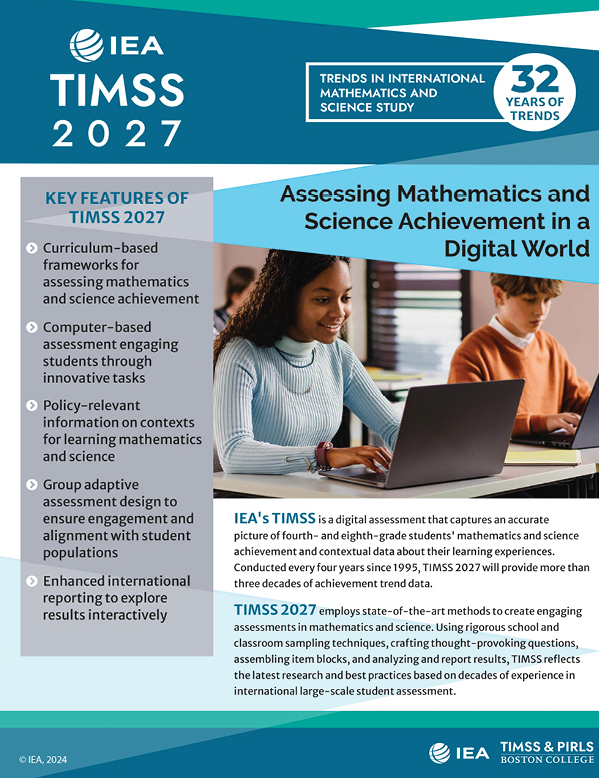
Assessing Mathematics
and Science Achievement
in a Digital World
About TIMSS 2027
IEA’s Trends in International Mathematics and Science Study (TIMSS) is a digital assessment of fourth- and eighth-grade students’ mathematics and science achievement conducted every four years since 1995. For over three decades, TIMSS has been at the forefront of monitoring global trends in student achievement.
TIMSS 2027 is the study’s ninth cycle, providing policymakers and educators access to invaluable data for monitoring progress, identifying potential areas of improvement, and making informed policy decisions. With 32 years of achievement trend data and comprehensive contextual data about students’ learning experiences, TIMSS 2027 results can provide data-driven insights that can help share the future of education in participating countries.
TIMSS 2027 Key Features
- Curriculum-based frameworks for assessing mathematics and science achievement
- Computer-based assessment engaging students through innovative tasks
- Policy-relevant information on contexts for learning mathematics and science
- Group-adaptive assessment design to ensure engagement and alignment with student populations
- Enhanced international reporting to explore results interactively

As in previous cycles, TIMSS 2027 introduces several advancements to enhance the assessment. TIMSS 2027 is a fully digital assessment, employing state-of-the-art methods to create engaging assessments in mathematics and science and reflecting the latest research and best practices based on decades of experience in international large-scale student assessment.
TIMSS 2027 Benchmarking Option
Entities such as regions (e.g., states or provinces) or additional grades (e.g., fifth grade) may enroll as benchmarking participants in the same way as countries.
TIMSS 2027 Longitudinal Option
It is possible to re-assess the same students one year after the TIMSS 2027 assessment to investigate students’ learning gains over one year of schooling. The TIMSS Longitudinal option enables examining the degree of increases across instructional goals and the differences in gains across subgroups of students.
TIMSS 2027 Schedule Highlights
First National
Research Coordinators
meeting
Field test in all countries
Main survey data collection
Release of the TIMSS International Results
Release of TIMSS 2027 International Database and User Guide
